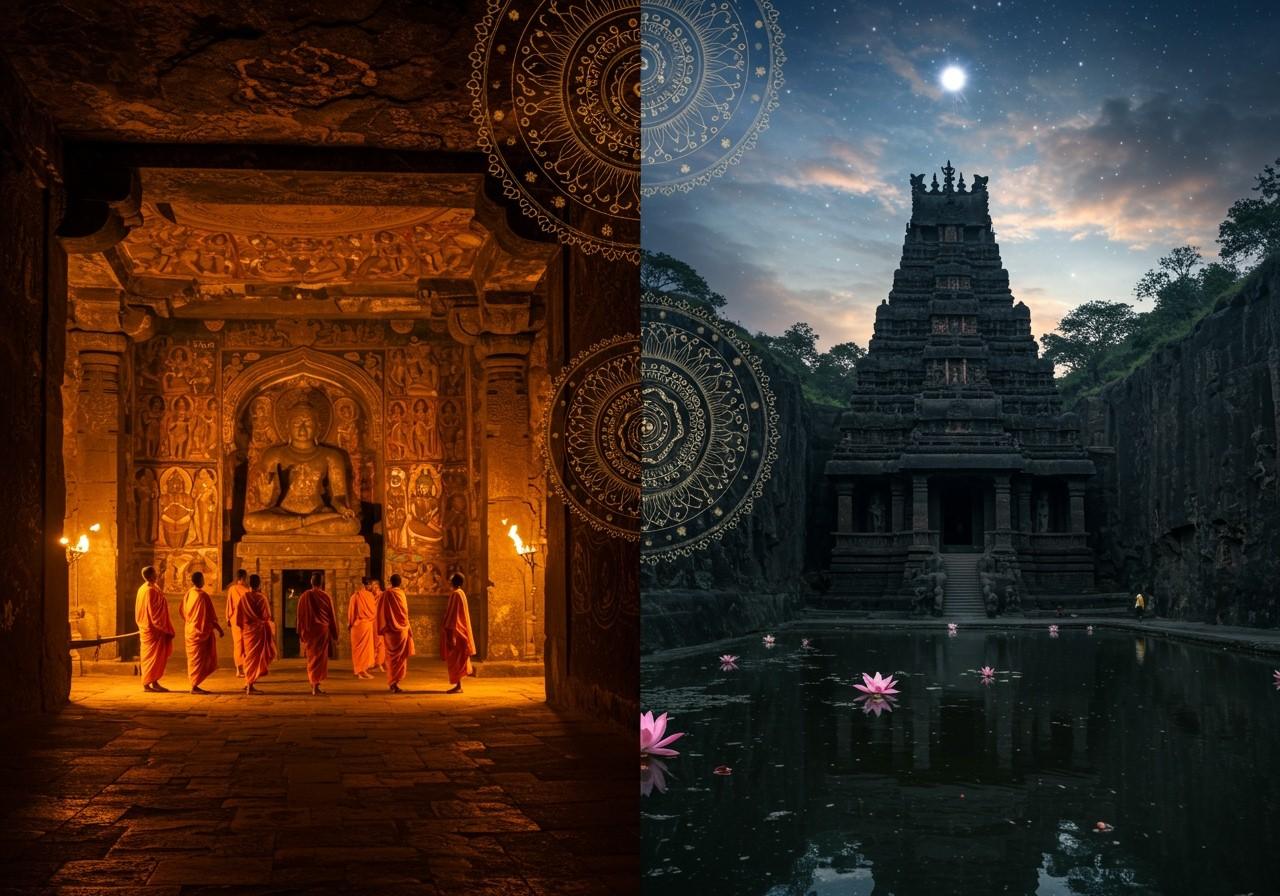
India boasts some of the world’s most breathtaking and historically significant cave complexes, including the Ajanta and Ellora Caves. These UNESCO World Heritage Sites attract visitors globally, offering a glimpse into ancient Indian art, architecture, and religious practices. This article offers a comprehensive comparison to help you decide which caves should be on your travel itinerary.
Historical Background
Both Ajanta and Ellora Caves possess rich histories spanning centuries.
- Ajanta Caves: Primarily Buddhist, these 30 rock-cut monasteries and temples were constructed between the 2nd century BCE and the 6th century CE. They showcase early Buddhist art and architecture and served as a monastic retreat for Buddhist monks.
- Ellora Caves: Built between the 6th and 10th centuries CE, these 34 caves feature a blend of Buddhist, Hindu, and Jain monuments. This unique mix of religious representation makes Ellora a fascinating site, reflecting the diverse religious landscape of ancient India. Ellora was a significant commercial center.
Ajanta Caves were rediscovered in 1819 by British soldiers, while Ellora Caves have been known locally for centuries. The Satavahana dynasty primarily patronized Ajanta, while the Rashtrakuta, Chalukya, and Kalachuri dynasties contributed to Ellora. Both sites have undergone extensive restoration to preserve their intricate carvings and paintings, recognized for their global significance with UNESCO World Heritage status in 1983.
Architectural Marvels
The architecture of both cave complexes testifies to ancient Indian craftsmanship.
- Ajanta Caves: Renowned for elaborate facades and intricate interiors, featuring chaitya halls (prayer halls) and viharas (monastic residences). The rock-cut technique involved painstakingly carving the structures out of solid basalt rock.
- Ellora Caves: Famous for the Kailasa Temple (Cave 16), a monolithic rock-cut marvel dedicated to Lord Shiva, showcasing advanced architectural techniques. Ellora’s caves exhibit a wider range of artistic styles compared to Ajanta, from simple rock-cut chambers to elaborate multi-story temples.
Artistic Grandeur
Ajanta and Ellora Caves boast captivating artistic elements.
- Ajanta Caves: Famous for murals and frescoes depicting the life of Buddha and Jataka tales, created with natural pigments. These paintings offer valuable insights into Buddhist teachings and stories, and the serene atmosphere within the caves enhances the viewing experience.
- Ellora Caves: Showcases a blend of Buddhist, Hindu, and Jain art in the form of intricate sculptures carved from basalt rock. The diverse iconography reflects the coexistence of different religious traditions at Ellora. The sheer scale and grandeur of the structures, particularly the Kailasa Temple, are awe-inspiring.
Accessibility and Distance
Ajanta Caves are approximately 104 km from Aurangabad, while Ellora Caves are about 30 km from the city. Both sites are accessible by road, with regular bus services and private taxis available from Aurangabad.
Visitor Experience
- Ajanta Caves: Offer a tranquil atmosphere, ideal for those seeking a serene experience surrounded by ancient art. Be prepared for more walking and climbing at Ajanta.
- Ellora Caves: Provide a dynamic and awe-inspiring experience due to the grandeur and variety of religious monuments. Ellora is generally easier to navigate than Ajanta.
How Poojn.in Can Enhance Your Visit
At Poojn.in, we offer puja items to enrich your spiritual experience at these ancient sites:
- Bel Mala: For offerings and personal devotion.
- Tulsi Mala: A sacred garland for prayer and meditation.
- Shiva Lingam: For offerings at the Hindu shrines in Ellora.
- Incense Sticks: Create a sacred ambiance.
Visit Poojn.in to order before your trip. Check temple regulations regarding permitted items.
Conclusion
Choosing between Ajanta and Ellora depends on your preferences. Ajanta offers tranquility and exquisite murals, while Ellora presents awe-inspiring grandeur and diverse religious art. Both destinations promise an unforgettable journey through ancient India’s artistic brilliance.
Pataleshwar Caves: Sacred Spaces and Rock-Cut Architecture
Badami Cave Temples: Chalukya Dynasty Architecture


